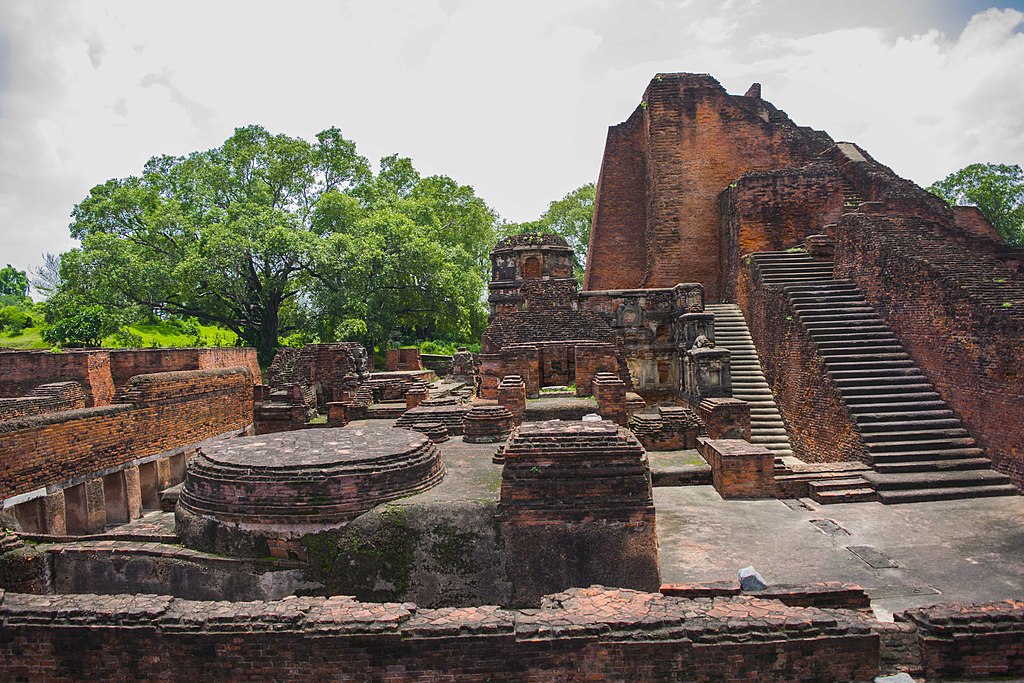Probably the only educational heritage site in India is the Nalanda University which is situated in the southeast of Patna near the city of Bihar Sharif. It is believed to have provided education to students all over the world especially of Tibet, China, Central Asia, Korea, etc since the 5th century CE to 1200 CE. That’s right, from the 5th century CE!

The Establishment
It was built by Kumaragupta the first but was expanded by later kings particularly in the seventh century. It was primarily a Buddhist monastery which allowed almost 10,000 students to reside in it along with 2000 teachers, to teach and guide them. The historical significance of it doesn’t only consist of it being the second most beautiful site in the world declared by UNESCO, but also the fact that the Buddhist guru and the founder of the religion Gautam Buddha himself had visited the University.
The site has always attracted archaeologists and has been a fascinating study for historians.
Accounts by Chinese Visitors
The two famous Chinese visitors Hiuen Tsang and I-tsing visited the monastery and written their accounts on it, from where most of the information is known. Interestingly, we find two different concepts about the naming of it. Tsnag believes it was derived from ‘Na alam d’ meaning charity without intermission or no end in gifts while I-tsing believed it came from ‘Nga Nanda’ where naga refers to a snake in the local tanks whose name was Nanda.
The Sacking of the University
Much later in 1193, the university was sacked by the Turkic people under Bakhtiyar Khaliji. The university was so big that it’s library burned for 3 months straight after being put on fire by the Mughals. The University housed ten temples, meditation centers and was divided into three buildings – the Ratnasagara (Sea of Jewels), the Ratnadadhi (Ocean of Jewels) and the Ratnaranjaka (Delighter of Jewels) building; the library was known as Dharma Gunj (Mountain of Truth).
The library contained religious manuscripts and a vast collection of books on literature, linguistics, astrology, philosophy, science, warfare, history, economics, law, geology, maths, architecture, metallurgy, astronomy, medicine, with mathematics and astronomy being the most renowned subjects. This magnificent site had been destroyed.
Reestablishment of the Nalanda University
It was later in 2006 that the government of India decided to request the State Government of Bihar to restore the heritage. Simultaneously, the Singapore government also proposed the same idea to the Indian government. To this day, a number of the ruined structures are still standing tall. The portion of the university that has been excavated sprawls over an area of 150,000 square feet. According to various reports, it is believed that almost about 90% of the university still remains to be excavated. In 2016 it got an international acclamation from UNESCO.
It has been restored in the form of a new University now. It teaches subjects different from what had been previously taught (grammar, Sanskrit, Veda, Mahayana, etc). Today it provides various postgraduate courses for the students including that of masters in Buddhist studies, philosophy, and comparative religions. One of the Indian Nobel laurates Amartya Sen was it’s chancellor for ten years before he resigned from his post, however, he continues to be a part of the governing body. The University’s current chancellor is Vijay P. Bhatkar.
